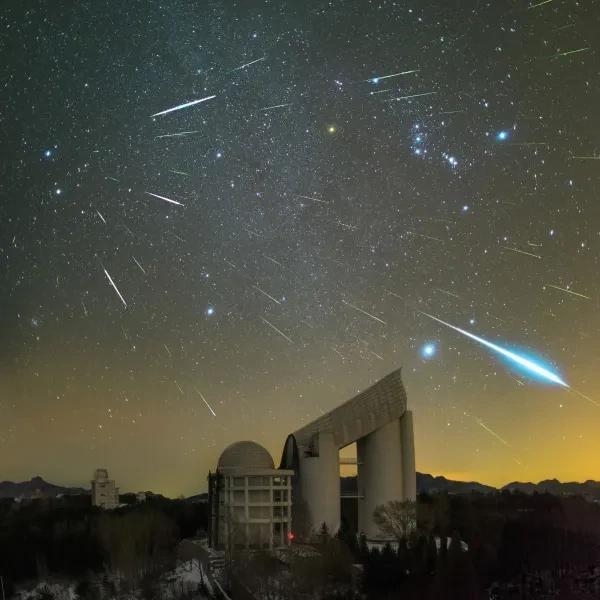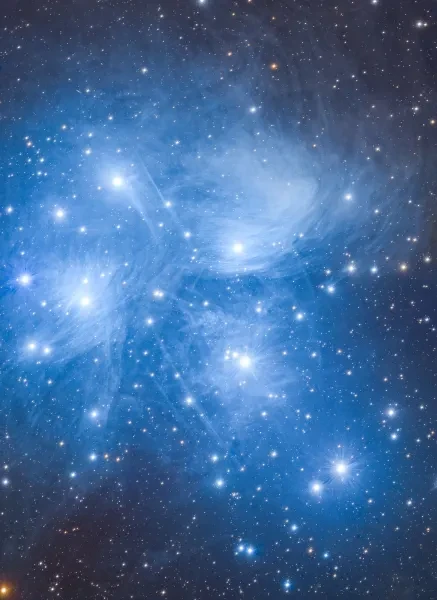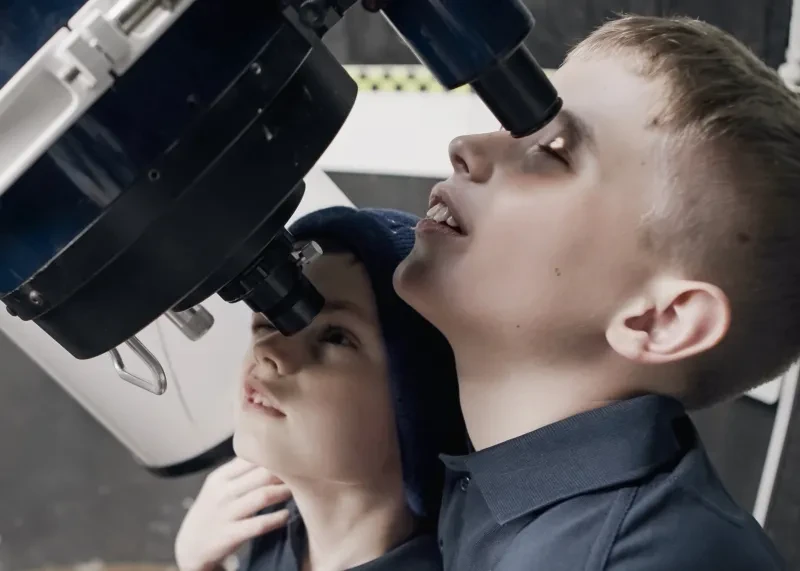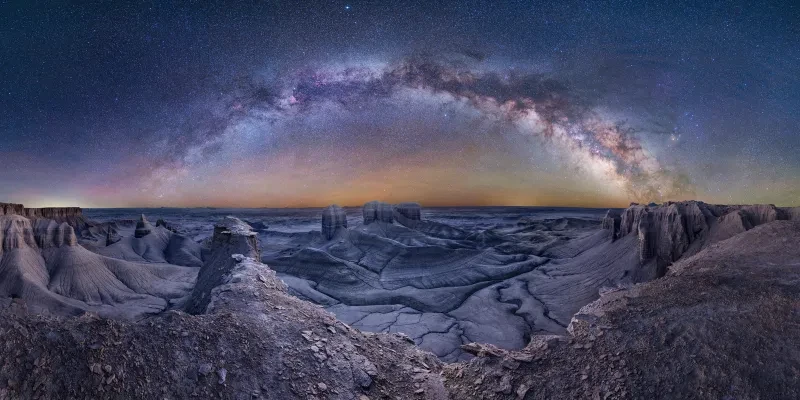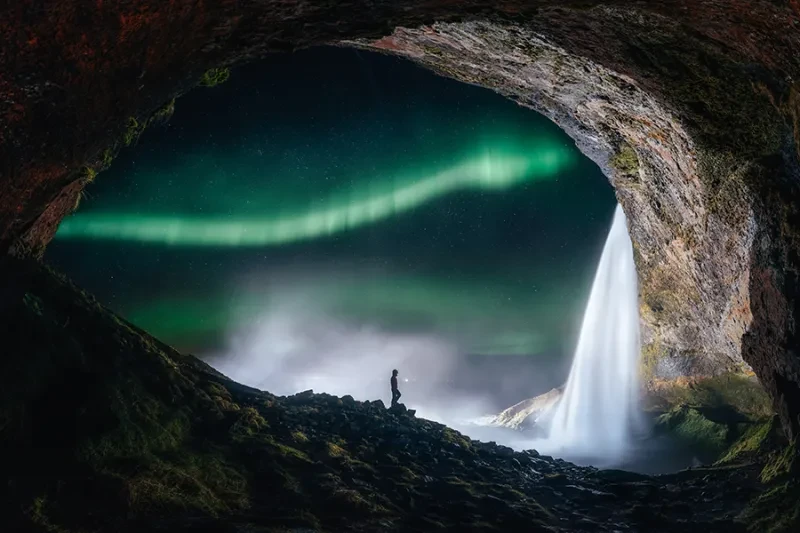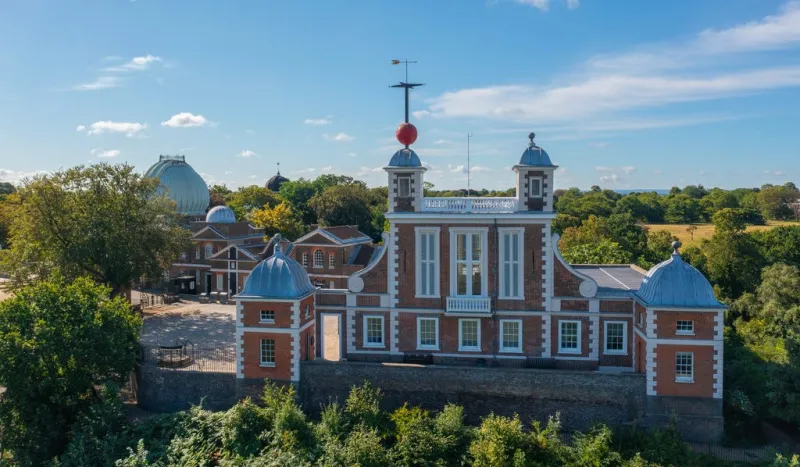
Find out what to see in the November night sky, including the Orion Nebula, open star clusters and more.
Top 3 things to see in the night sky in November 2024
- Throughout the month: the Orion Nebula
- Throughout the month: the Pleiades and Hyades star clusters
- 17 and 20 November: conjunctions of Jupiter and Mars with the Moon
Look Up! podcast
Subscribe and listen to the Royal Observatory Greenwich's podcast Look Up! where our astronomers Jess and Catherine talk through some of November’s must-see cosmic objects. They'll also delve into this month’s cosmic news stories: the launch of the Europa Clipper which is on its way to explore Jupiter's icy moon Europa, and Earth's new temporary 'mini moon'.
The Orion Nebula
Throughout the month, the Orion Nebula will be visible, as the name suggests, in the constellation of Orion. With the naked eye it can be seen as a fuzzy star beneath Orion's Belt, even in more light polluted areas. More detail can be spotted using binoculars or a small telescope, which reveal its true form as a cloud of gas and dust.
It's not just astronomers who love the Orion Nebula. Astrophotographers love it too, and it's become one of the most popular targets for astrophotography.
Inside the Orion Nebula is the Trapezium cluster. The four brightest stars of this cluster can be spotted with a telescope. This makes the Orion Nebula a perfect target for stargazing enthusiasts at any skill level.
The Triangulum Galaxy
Another deep sky object visible this month is the Triangulum Galaxy. Don't let its name fool you: this galaxy is actually shaped like a spiral, just like our own Milky Way Galaxy. Its name actually comes from the triangle-shaped constellation Triangulum, in which the Triangulum Galaxy is found.
The Triangulum Galaxy is about 61,000 light-years across, making it the third largest in the local group of galaxies – just behind the Andromeda Galaxy and the Milky Way. The Triangulum Galaxy is 2.75 million light-years away from Earth, but can still be spotted with the naked eye under very good viewing conditions. Using binoculars or a small telescope may give you a better chance of spotting it.
Spectacular Star Clusters
This month also comes with plenty of opportunities to view star clusters, as both the Pleiades and Hyades star clusters are visible in the sky!
The Pleiades is an open star cluster also known as the 'Seven Sisters'. However, generally only six can be seen with the naked eye. The reason for this confusion may be because the seventh brightest star in the cluster – Pleione – is a variable star, with brightness changing over time. This means Pleione isn't always visible to observers, making the 'Seven Sisters' sometimes look like they're missing a member. The Pleiades can be found in the constellation of Taurus, where a group of blue stars should be visible.
The Hyades is another cluster located in the constellation Taurus. It is the nearest open cluster to Earth, only 150 light-years away from our planet. In the sky, it appears to be shaped like a 'V', with the inclusion of the star Aldebaran. Aldeberan is about 90 light-years closer to Earth than the Hyades, so is not actually part of the cluster. The Hyades can be seen with the naked eye, but more stars in the cluster can be seen with the use of a telescope.
Jupiter and Mars Approach the Moon
On the 17 and 20 of November, Jupiter and Mars respectively will be making a close approach to the Moon, in an event known as a conjunction. You'll be able to see each planet close to the Moon.
On 17 November, Jupiter will be about five fingers at arms length away from an almost completely full moon. Jupiter will become visible at about 6.30pm and will reach its highest point at about 1.20am.
On 20 November, Mars will appear about two fingers at arms length away from a waning gibbous Moon.
Southern hemisphere: Magellanic Clouds
If you live in the southern hemisphere, then the Small and Large Magellanic Clouds are a great target to find. These irregular dwarf galaxies are much smaller than our own Milky Way. They are about 75,000 light years apart, but are connected by a bridge of gas that generally can't be seen with the naked eye.
These twins were created about 13 billion years ago just like the Milky Way and are part of the Local Group of galaxies. They can be seen with the naked eye as small clouds in the sky, almost like they're pieces that have broken off from the Milky Way!
The Moon's phases in November 2024
New Moon: 1 November (12:47)
First Quarter: 9 November (05:55)
Full Moon: 16 November (01:13)
Last Quarter: 23 November (01:28)
Stargazing tips
- When looking at faint objects such as stars, nebulae, the Milky Way and other galaxies it is important to allow your eyes to adapt to the dark so that you can achieve better night vision.
- Allow 15 minutes for your eyes to become sensitive in the dark and remember not to look at your mobile phone or any other bright device when stargazing
- If you're using a star app on your phone, switch on the red night vision mode.
Find more stories like this
Header image: Nebulae of the Large Magellanic Cloud © Jonathan Lodge | Shortlisted in Astronomy Photographer of the Year 2024. The brand new exhibition is now open for free at the National Maritime Museum






